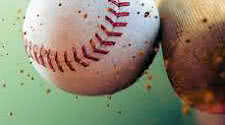Weight & Strength Training for Baseball Players, Pitchers and Catchers

Weight Training is the Number One Solution to All Sports Improvement Goals
When most Americans think of springtime they think of baseball - the national pastime-and the boys of summer. Numerous clichés exist to describe a sport that millions of Americans play but few
actually train for.
Sure, you may practice hitting balls at the batting cage or throwing pitches to imaginary hitters, yet even among professional ballplayers offseason training is seldom a part of the year-round
conditioning program. And the situation doesn't improve in peak season, when the physique and condition of many baseball players leave much to be desired.
There are a few exceptions, however, like Bo Jackson, Jose Canseco and Vince Coleman, who train year-round and maintain a physical condition that creates optimal performance throughout the
season. In fact, several top athletes have begun to incorporate weight training into their off-season and spring-training workouts to enhance their playing ability. Baseball players no longer
want to be considered out-of-shape athletes, and they are changing their training practices to keep up with the times.
Some major-league teams have incorporated aerobics classes as part of their spring-training conditioning programs. Others are incorporating weightlifting and sprint/power training. In order to
decide what types of training will be most effective for a baseball player, it is important to determine what variables are important to performance.
Most ballplayers require little, if any, cardiovascular endurance, as they are not required to run for extended periods of time and are not active during the game except for brief periods of
play. For these reasons aerobic training is not time beneficial for a ballplayer. Even so, aerobic dance classes are included at some spring-training camps on the premise that this type of
exercise, aside from increasing aerobic endurance, will benefit the players in terms of flexibility and coordination, two important requirements for the game of baseball.
A better use of the baseball players' time is to focus on training for skill acquisition, speed and power. The skill aspect of training for a given fielding position comes from years of drills,
practice and game situations. Specificity of training applies strongly for skill acquisition.
Most activities associated with baseball require brief periods of explosive power and speed. These qualities can be enhanced successfully through weightlifting. Although the majority of training
time should be spent on drills specific to the position played, as well as on hitting, an offseason/preseason weight-training program will not only increase overall strength, but also increase
the explosive power necessary for hitting home runs. The adaptations made during the preseason can be maintained throughout the season with minimal time spent in the gym.
A training program for baseball should emphasize the shoulders, back, hips and legs-all the muscles used during batting. You can train other bodyparts to develop overall body balance and strength;
however, the above-mentioned muscle groups deserve specific attention in the form of heavy-weight, low-rep power training. Although it is desirable for ballplayers to develop some degree of
hypertrophy, excess weight will slow down and inhibit their range of motion.
Power training is explosive by nature. All lifts are done extremely fast, but with control. You stress the fast-twitch fibers by keeping the repetitions at around four to six for max sets. You
neglect higher-repetition training to avoid training the slow-twitch fibers. You should perform all movements of the heavy sets fast during the exertion phase; for example, when performing the
squat, you would lower yourself fairly slowly in a controlled manner, but once you reach the bottom position, you would explode upward as fast as possible.
This type of training will not only increase strength, but also explosive power. You should perform all lifts in this manner. The total weight lifted is only partially important. You should also be
concerned with the speed of the movement.
You should increase the weights when you can perform the desired number of repetitions with ease. This type of training will stress the fast-twitch fibers and increase the explosive power needed to perform
fast movements during a game.
Remember to be extremely careful when doing these workouts. They require adequate warmup, since ballistic training runs a greater risk of injury. It is best to perform this type of workout at least
once per week for each bodypart. Your other weekly workout for each bodypart can be conventional, slower in movement speeds, to rest the joints, ligaments and connective tissue while training the
muscles for increased strength. Follow every workout with a stretching session, since flexibility is an integral skill requirement for baseball.
Whether you apply ballistic power training for an increased performance in hitting, pitching or overall playing ability, this type of training will not only benefit your daily performance, but also
reduce your risk of injury, allowing you to play longer and at a higher level without bringing on symptoms of overtraining or overuse. No matter what your sport, if the performance requires explosive,
powerful movements, this type of program can benefit you.